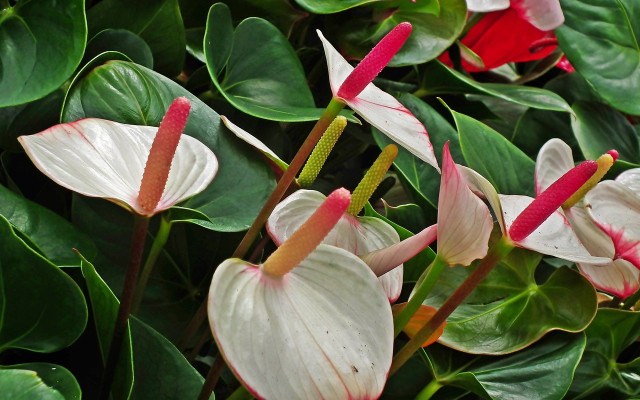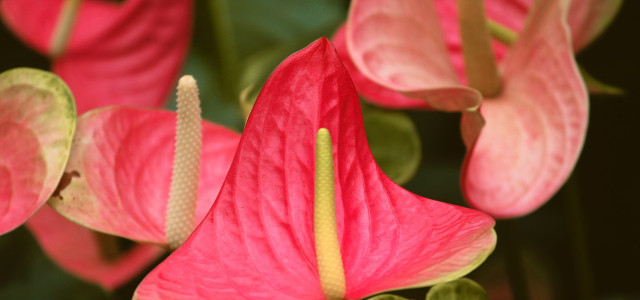The flamingo flower, also called a flamingo lily or anthurium, is a beautiful tropical houseplant that can be kept in any house or apartment. We’ll share our best tips for how to care for your flamingo plant.
Flamingo plants have striking, waxy flowers that will add a tropical touch to any living space. Also called anthuriums, the flamingo flowers are native to the shady, humid climates of Ecuador and Colombia. Botanically speaking, the anthurium genus includes about 1000 species, making it the largest genus in the Araceae family.
This perennial grows upright and can reach up to about 3 feet in height. The type of indoor flamingo plant that is commercially available is actually a hybrid between larger and smaller anthurium species.
Fun fact: What most people refer to as the flowers of the flamingo lily are actually not flowers at all, but a modified leaf called a bract or spathe.
Flamingo Plants: Transplanting and Proper Placement

If you’ve decided that you want to keep flamingo flowers in your home, the first thing you’ll need to do is find the right spot for them. Anthuriums like half-shady places, without direct sunlight. They do best at around 70-75ºF, which makes normal room temperature ideal. In winter, they can tolerate temperatures from around 60-65ºF. Flamingo lilies also like high humidity, which makes them especially well-suited for brightening up your bathroom.
When buying flamingo flowers, it’s important to make sure that they come in good potting soil. This will make them less vulnerable to plant diseases and pests.
Young flamingo lily plants are usually repotted in springtime. It’s best to use a high-quality indoor potting mix with high humus content, an acidic pH, and little to no peat.
Here’s how to repot flamingo flowers:
- Carefully remove the flamingo lily from its pot.
- Gently shake the plant to get rid of as much soil as possible.
- Fill a larger pot about one-third full with potting soil.
- Position the plant upright in the center and fill the rest of the pot with soil.
- Pat down the surface of the soil, to set the plant firmly in place.
- Water the flowers well.
Caring for Anthuriums: Tips



Flamingo flowers are not exactly the most low-maintenance houseplants that you can buy. But if you’re careful to watch out for a few things, your anthuriums will thrive.
- The soil that the flamingo plant is in should never be dry. Water the plant regularly, but don’t overdo it. Calcium in tap water is bad for anthuriums; it’s best to use either distilled tap water or rainwater to water them (read our article about how to distill water if you need help). It’s also important that the water isn’t too cold; room temperature is best. In winter, reduce the amount of water you give the plant.
- In summer, you can fertilize the plant once a week. Simply add a small amount of low-sodium fertilizer to your watering pot. In winter, fertilize only once every four weeks.
- Keep the humidity high. If necessary, spray the flamingo flowers and leaves regularly with calcium-free water.
- Once in a while, dust off the leaves to help the plant photosynthesize at full capacity
- Anthuriums don’t need to be pruned or trimmed.
This article was translated from German to English by Christie Sacco. You can read the original version here: Flamingoblume: So pflanzt und pflegst du Anthurien
** Links to retailers marked with ** or underlined orange are partially partner links: If you buy here, you actively support Utopia.org, because we will receive a small part of the sales proceeds. More info.Do you like this post?






